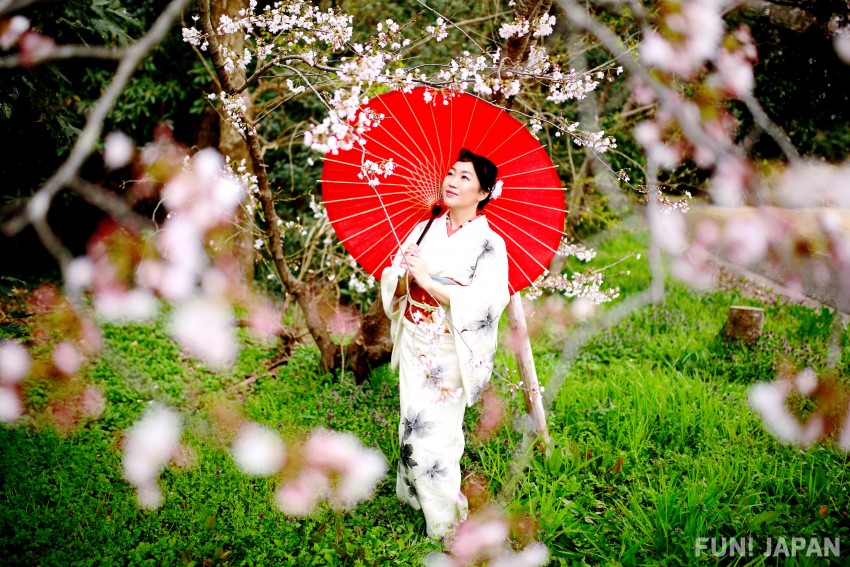
There are various meanings in the colours of the kimono, and white kimono has an important meaning in the life of the Japanese. Let's take a look at the white kimono, which has a sacred meaning since ancient times and is a colour that symbolizes life and death. Actually, even though they are called white, it is interesting that there are various colours available.
White Kimono Worn Right After Being Born
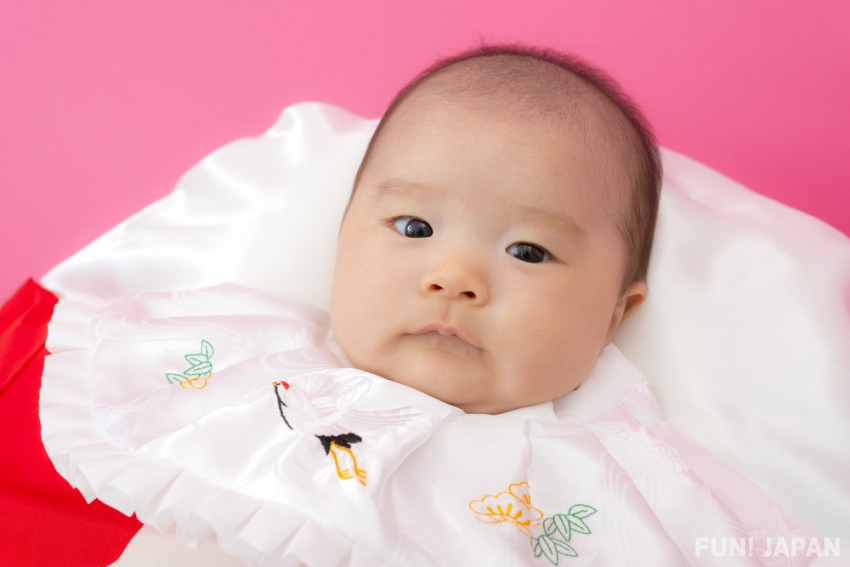
Traditionally, white clothes are generally used to put on the newborn babies. In addition, there is a custom that hemp patterns are made on the clothes to match the hemp plant which symbolizes growing straight and strong withstanding insects. In addition, the white kimono will be worn even at the "Omiya-mairi" (お宮参り palace visiting) which is when the baby visits the shrine for the first time in life.
Baby Kimono Worn at 3 Big Japanese Traditional Occasions
White Kimono Worn at the Wedding Ceremony
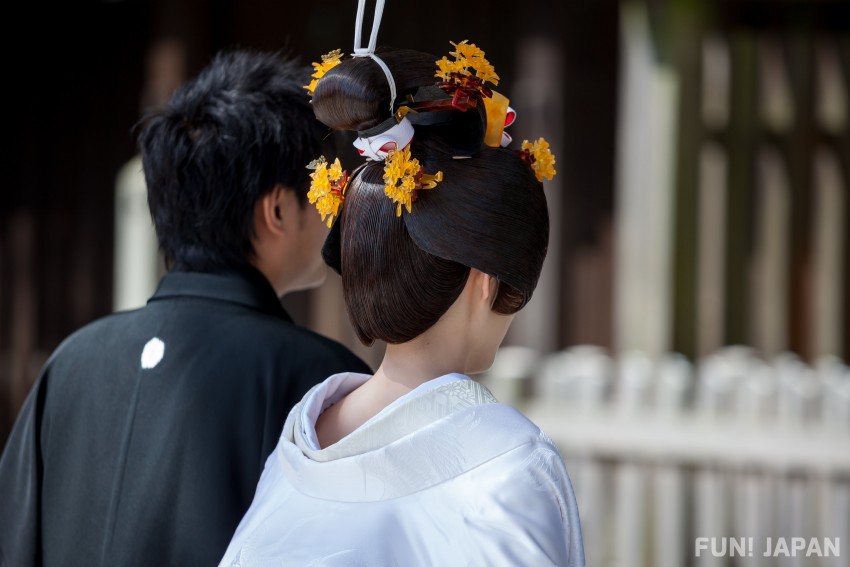
"White" has the meaning of "purity" and "ready to be dyed in the customs of the house one wedded to". Therefore, at the wedding, the bride wears a kimono called Shiromuku (白無垢 stain-less white). It is a colour that symbolize the strong determination of the bride to live in a house where she was married to, by dying and ceasing to be a daughter of the house where she was born, then revived with new blood of the groom's family. It's a very Japanese way of thinking.
It is said that black is the most prestigious of men's wedding kimonos (with family crest). However, in recent years, more and more men wear white to match the women's Shiromuku.
Gorgeous Wedding Kimono that Inherits Japanese Tradition
White Kimono Worn by the Deceased
Even at funerals when a dead person is seen off, the deceased person usually wears a white kimono. It has the meaning of abandoning all the worldly desires and wickedness and leaving the world for the afterlife with a pure feeling.
In the past, funeral attendants also wore white clothes. It meant to prevent the spread of the filth of death and to eliminate the anxiety of the deceased who set out on a journey to the Pure Land. At modern funerals, mourners and other attendees wear black mourning clothes. It has taken root since the Meiji era when Western culture began to settle in.
Occasions Where you can See White Kimono
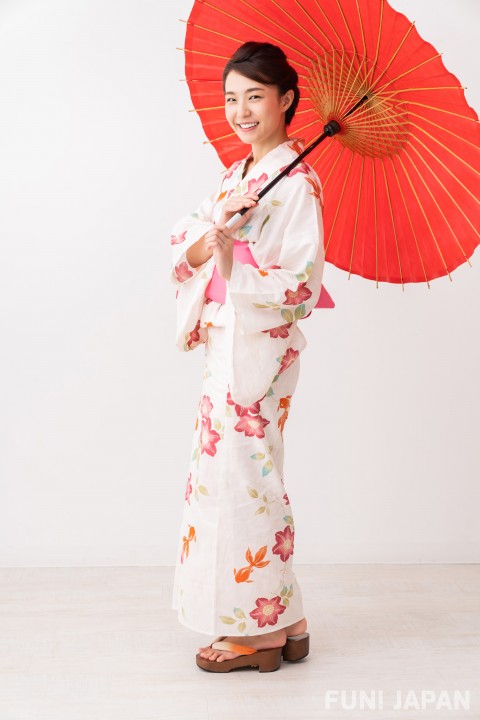
Have you ever seen white kimono during your visit Japan or in the information related to Japan on the media? Probably you might have seen them in these occasions.
White Kimono Worn by Shrine Priests and Shrine Maidens
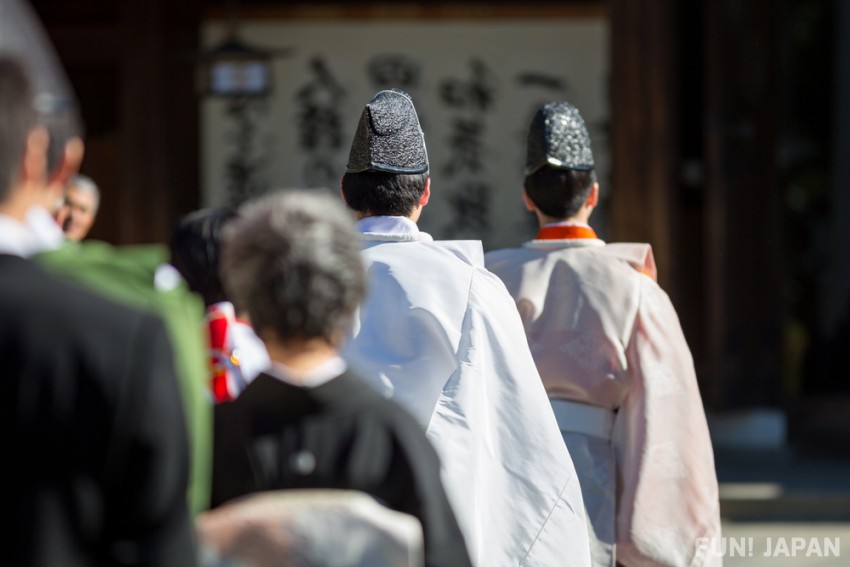
Shinto priests (神主 / Kannushi) and shrine maidens (巫女 / Miko) who administer Shinto rituals also have the custom of wearing white kimono. Shinto priests wear white kimono and coloured hakama on special occasions. The colour of this hakama is determined by the status of the priesthood. A young priest starts with a white kimono with a pale blue-green hakama, and then change to purple as he gains experience. Very few people, such as Daiguji (大宮司), the top ranks of Ise Shrine, wear special clothes with white kimono and white hakama.
White Kimono of the Majesty the Emperor
It is a tradition that His Majesty the Emperor wears a white kimono at the Niiname-sai (新嘗祭), which is one of the events held in the Imperial Palace to pray for a good harvest.
Colour Types of Japanese White Kimono

Although white is white, there are various white colors in traditional Japanese colors.
- White (白 Shiro): One of the oldest colour names in Japan. It has the meaning of purity and sacredness, and as mentioned above, it is worn at a turning point in life.
- Pure white (純白 Junpaku): It is a completely white colour that is completely transparent. The same color as "Mashiro" (真白 true white).
- White Lily colour (白百合色 Shirayuri-iro): It is a slightly yellowish white colour like the white lily flower. The colour of Lily White has been a colour name since the beginning of the 14th century, and carries on the image of "purity" and "virginity" that symbolizes the characteristics of the Virgin Mary.
- Newly-made colour (生成色 Kinariiro): A slightly reddish-yellowish white color like cotton
- White Bronze colour (白銅色 Hakudo-iro): Light gray with a slight bluish color, like metallic white bronze.
- Moon White (月白 Geppaku): White with a bluish tint reminiscent of the moonlight
- Unohana colour (卯の花色 Unohana-iro): Slightly yellowish white like u-no-hana flower.
How was it? There are meanings of the Japanese white kimono and many types of white colours; very surprising right?
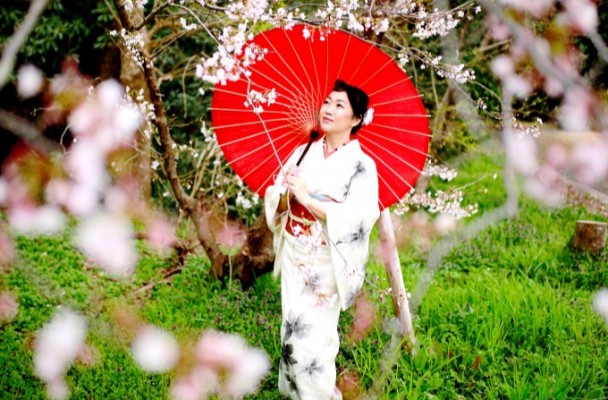
Comments